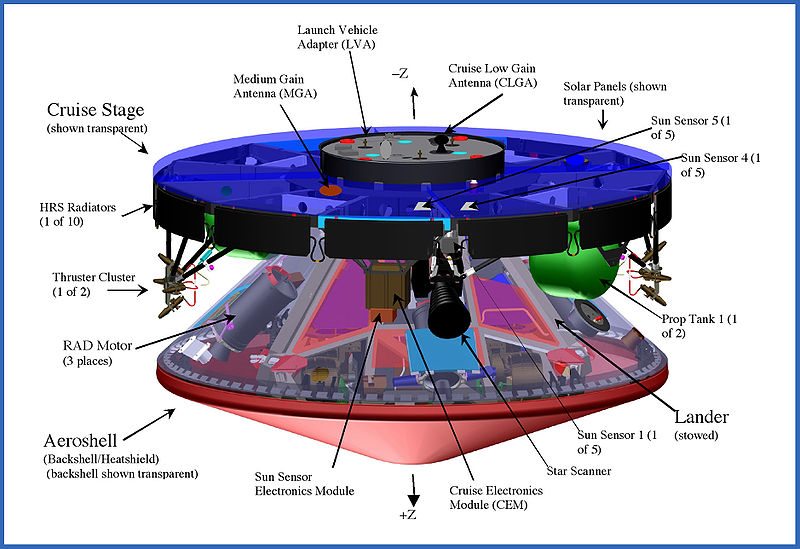
I’m back, and still with Spirit and Opportunity. Now, were was I?
To say the least, Mars missions are dangerous. About half of all missions have failed, including the two NASA missions that had gone before Spirit and Opportunity: an orbiter and a lander. Remember, a rover is a something that can move around, and a lander is something that stays in one place. But at least one of the two rovers had to work, or it would be humiliating, and probably ruin the integrity of JPL (The Jet Propulsion Laboratory). Of course, every one there did the best they could, but there was always that threat, especially during landing, the most dangerous time for any mission.
Spirit and Opportunity’s landing system was the same one used for the Sojourner rover, launched on July 4th, 1997. This is how it worked: First, the craft would shed most of its speed by slamming into the atmosphere. It would then release the parachute, and the heat shield would fall away. Then, the three-sided pyramid-shaped box holding the rover would start to lower away from the capsule on a rope, and air bags on it would inflate. Then, to get a low enough speed for a safe landing, rockets on the capsule would fire, the rope holding the rover would be cut, and the box with the rover would, due to the airbags, bounce around until it came to a stop–in the case of Spirit, it bounced for a kilometer! The air bags would then deflate, the three sides of the box would unfold, and the rover would be ready to roll off.
Of course, there were some challenges for the engineers building the rovers. For one thing, the capsule had been designed for a much smaller rover and its computer, so they had to design the rovers to be able to fold up for the journey, and then unfold after landing.
They also had problems with the air bags, because, due to the increased weight compared to Sojourner, they popped when a test required them to be dropped on sharp rocks. They solved this by adding a layer of tougher material under the fabric. They solved many other problems. But get ready! In part three, we are going to look at the instruments!

